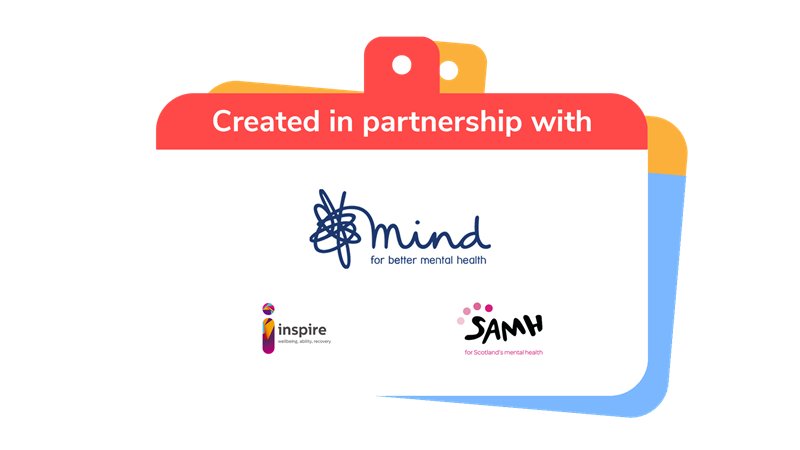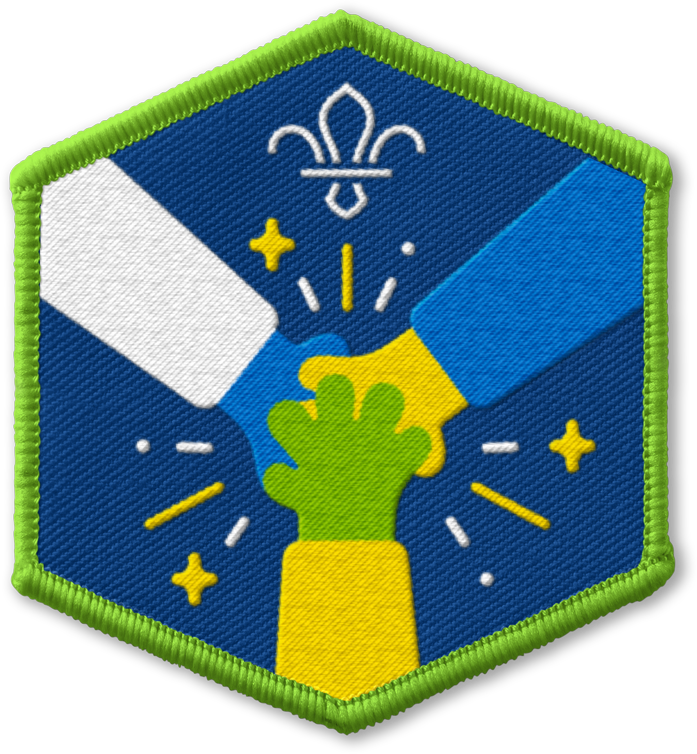
Wellbeing wheels
You’ll need
- Sticky tape
- Pens or pencils
- Rulers
- Glue sticks
- Split pins
- A4 paper
- Five ways to wellbeing sheet
- Cardboard
Before you begin
- Decide how you’ll explain the five ways to wellbeing. Depending on your audience, you may want to find some items to represent them, for example, a ball to represent ‘be active’ and a phone to represent ‘connect’. You may want to print out enough copies of the sheet for everyone to see one, or you could just read it out.
Talk about the five ways to wellbeing
- The person leading the activity should use the ‘Five ways to wellbeing’ sheet to help them explain that research found five things that help to boost wellbeing. Everyone could guess what sorts of things might be on the list, before the person leading the activity tells them.
Think of examples
- Everyone should split into five groups.
- The person leading the activity should give each group one of the five ways to wellbeing.
- Each group should think of some examples of things people could do to work towards their way to wellbeing.
Make the wheels
- Draw a large circle on a piece of a cardboard. It should be big enough to divide into sections, but small enough to fit into the middle of the other piece of cardboard. Cut the circle out.
- Balance the circle on the point of a pencil until you find the middle. Make a small mark on both sides, so it’s clear where the middle is.
- Divide the wellbeing wheel into sections – try to make them equal in size.
- Decorate each section of the wheel with an example from ‘Think of examples’. Use a mixture of writing and drawing to make it look good with a clear message.
- Glue the decorated cardboard circle to the other piece of cardboard.
- Using the scraps of cardboard from step one, draw an arrow. It’ll sit in the middle of the wheel and spin to sections, so it needs to be wide enough but not so long that it pokes off the circle.
- Use the sharp part of the split pin to punch a hole through the middle of the base of the arrow, and wiggle it around so it spins.
- Use the sharp part of the split pin to punch a hole through the middle of the cardboard circle (and the base it’s glued to). Bend the ends of the split pin so they’re flat against the cardboard base, and cover it with sticky tape.
- Spin the arrow and see where it lands to see which ways to wellbeing activity you could try.
- Everyone should keep their wellbeing wheels safe, as they may need them again soon.

This activity helps contribute towards some of the UN's Sustainable Development Goals. Find out more about the SDGs, and how Scouts across the world are getting involved.

Reflection
This activity helped everyone to think about living healthily. Mental health is just as important as physical health. Does anyone already do any activities to take care of their wellbeing? Some people may already be active, or learn something new like a musical instrument. Does anyone feel inspired to try something new?
This activity was also a chance to boost wellbeing. Which of the ways to wellbeing do people think would make them feel happiest? When people do activities to take care of their wellbeing, it can help them feel satisfied with their life. One of the ways to wellbeing is to give. How could people use their wellbeing wheels to give to others? Perhaps they could make another to give away, or just use theirs to give people some practical ideas for activities.
Safety
All activities must be safely managed. You must complete a thorough risk assessment and take appropriate steps to reduce risk. Use the safety checklist to help you plan and risk assess your activity. Always get approval for the activity, and have suitable supervision and an InTouch process.
- Glue and solvents
Always supervise young people appropriately when they’re using glue and solvent products. Make sure there’s plenty of ventilation. Be aware of any medical conditions that could be affected by glue or solvent use and make adjustments as needed.
- Sharp objects
Teach young people how to use sharp objects safely. Supervise them appropriately throughout. Store all sharp objects securely, out of the reach of young people.
You can split the wellbeing wheel into as many sections as you like. It’ll probably depend on how big it is. It’s up to you whether people make a wheel each or in groups.
Be sensitive if anyone has experience of mental health problems. Let them (and their parents or carers) know about the activity in advance and find out if there are any topics you should avoid.
Everyone has different ways of boosting their wellbeing – different things work for different people and that’s OK. Remind everyone that the five ways to wellbeing aren’t the only ways and that not everyone has to enjoy every activity.
Make sure people know that mental health problems are complicated, and can’t always be made better with the positive wellbeing activities and places. This isn’t the person’s fault, and it’s OK to need more support for mental health problems – speaking to a trusted adult, a GP, or Childline is a great place to start.
Have some information on hand in case anyone wants to know more about how they can seek help, and always follow the yellow card.
All Scout activities should be inclusive and accessible.

